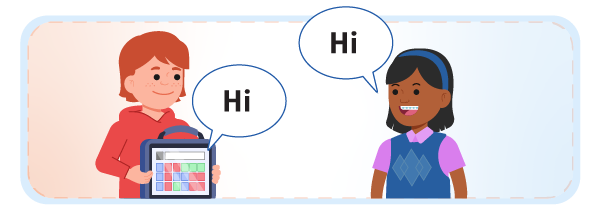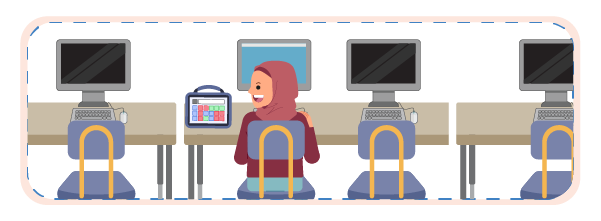January 2025 Newsletter | Technology in Special Education

Lea este artículo en español aquí.
Technology in Special Education
For students with and without disabilities, technology is a critical component of education. Technology is used to support instruction during class and to share information at home—and, for many students, it’s used as an accessibility tool to learn, communicate, and demonstrate skills.
Educators can be intentional and effective in utilizing technology in education by exploring assistive technology, understanding augmentative and assistive communication, and engaging students through digital content and video modeling.
Assistive Technology Many students (and educators) use assistive technology (AT) to navigate disability-related barriers in their daily lives, including while at school. AT for learning can include resources from communication support devices and screen-reading software to an array of highly specialized and uniquely designed accessibility tools for engaging with any number of educational materials. Augmentative and Alternative Communication Augmentative and alternative communication (AAC) provides many students with autism and other disabilities opportunities for effective functional communication. Technology-based resources for communication—from low-tech options to complex digital systems—help students share their needs and interests, demonstrate learning, and build connections. Educators can help ensure access and encourage communication development by incorporating strategies to support AAC users during daily activities. It’s important to always consult with your team about the best way to incorporate AAC into your student’s day. Here are some tips for supporting students using AAC devices throughout their day using the STAR and Links curricula.
|
Technology for Student Engagement Utilizing digital content and introducing skills through video modeling during instruction are great ways to leverage engagement for a variety of student learning styles, needs, and preferences. STAR’s content includes options for engagement through digital REELs and video models offered throughout our range of curriculum products! Digital REELs Many lessons in the STAR Autism Support curricular product set use technology in materials we refer to as digital REELs as part of our instructional model. In Themes First! units and Links Academic Teaching Units (ATUs), these REELs offer educators alternative or complementary resources to teach lessons.
Video Modeling Another evidence-based instructional tool using technology is video modeling. Video modeling can provide students with engaging demonstrations of a behavior or skill. At STAR, our content regularly utilizes video in lessons show step-by-step routines or processes, like in science experiments and art lessons, and to model social skills. Check out our Ice Cube Painting art lesson from this month’s Themes First! unit to see an example of a video model! For more tips and strategies, check out this STAR newsletter all about video modeling (English | Español). |
Putting It All Together
Technology provides opportunities for many diverse learners to engage with academic and social education: It can provide accessibility, engagement, and individualization to support their unique educational goals. Using technology as a supplement to other existing printable materials can reinforce the content in new ways, too. At STAR, we consider this in our curriculum design with your students’ needs in mind.
An example of STAR’s intentional use of technology is demonstrated in our foundational science lesson series. ATUs feature a foundational science lesson available each month to supplement themed monthly lessons as needed. Paired with visual supports like posters, these videos engage students in learning fundamental science concepts like science safety and the steps of the science process.
To teach science safety, for example, all of these options are included in the lesson design:
- Science safety poster (English | Español)
- Digital REEL (English | Español)
- Science safety video
Links users can continue using the full series of lesson plans with their corresponding digital REELs and video components. Themes First! users will also find a foundational science series including videos!
Want to learn more about how to integrate technology to support students? Contact us to learn about our curricula!


